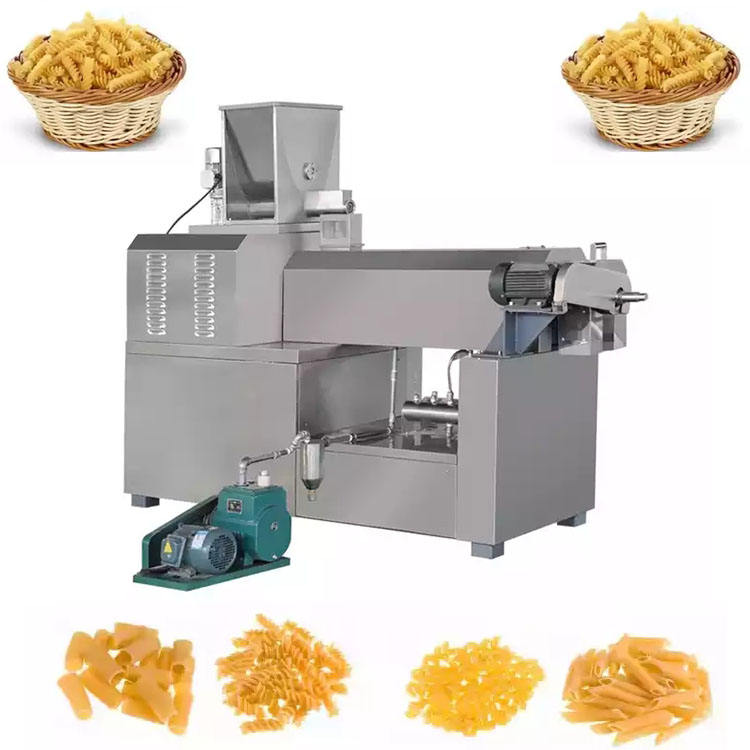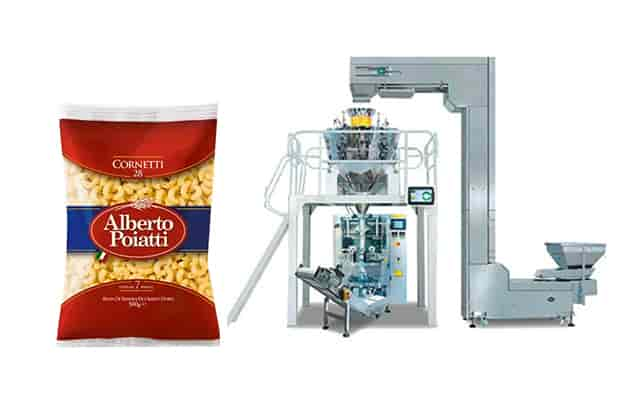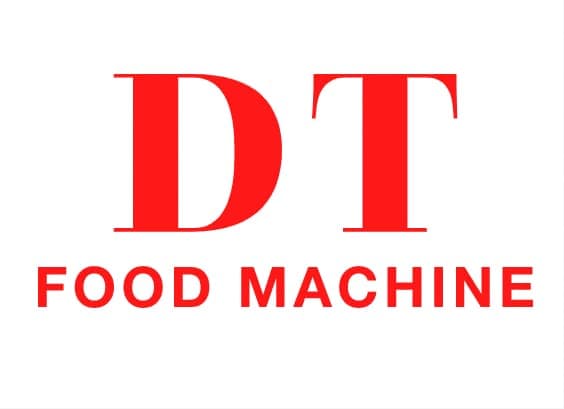مقدمة
في السنوات الأخيرة, the global demand for dry pasta has surged, driven by changing dietary habits, راحة, and urban lifestyles. Among the various pasta types, macaroni machine continues to be a staple in homes, المطاعم, and ready-meal brands. To meet increasing market demands while maintaining high quality and production consistency, many food manufacturers are turning to fully automatic macaroni machines.
These industrial-grade machines streamline the entire pasta-making process — from mixing raw ingredients to drying the final product — all while minimizing manual intervention. This article provides a detailed look at the components, functionality, and advantages of a fully automatic macaroni production system for commercial applications.

Understanding the Fully Automatic Macaroni Machine
أ fully automatic macaroni machine is an integrated production system designed to manufacture pasta at scale. It automates every stage of production, ensuring a smooth, صحية, and energy-efficient process. These systems are typically installed in commercial or industrial pasta plants and are engineered to run continuously, producing large volumes with minimal downtime.
The machine includes all essential components: dough mixer, extrusion system, pasta cutter, مجفف, and often a cooling and packaging section. Operators monitor the process via a PLC-based control panel that allows fine-tuning of variables such as temperature, رطوبة, cutting length, and extrusion pressure.
Why Choose a Fully Automatic Macaroni Machine?
Implementing a fully automatic solution offers several clear advantages:
- High throughput: Capable of producing hundreds of kilograms of macaroni per hour
- جودة المنتج متسقة: Uniform shape, لون, and moisture levels
- Labor reduction: Fewer operators needed due to automation
- Lower operating costs: Energy-efficient motors and dryers
- Compliance with food safety standards: Stainless steel design, easy cleaning
- Customizable output: Supports a wide range of pasta shapes through interchangeable molds
For commercial pasta producers aiming to scale without sacrificing quality, this technology is a long-term investment.
Main Components of the Production Line
A complete macaroni production system comprises several interlinked units. Below is an overview of each:
1. نظام خلط العجين
Mixes durum wheat semolina and water under controlled conditions. Some systems include a vacuum mixer to eliminate air pockets in the dough, تعزيز الملمس.
2. Screw Conveyor
Transports the hydrated dough to the extruder without manual intervention.
3. الطارد
The heart of the system. Uses single or twin screws to compress and push the dough through a custom die, shaping it into macaroni. The extruder chamber is typically jacketed for temperature control.
4. نظام القطع
High-speed rotary blades slice the extruded pasta into specific lengths. The cutting speed can be adjusted to match product specifications.
5. Drying Tunnel
A multi-stage, درجة حرارة- and humidity-controlled chamber that gradually reduces moisture content in the macaroni, preventing cracking and preserving texture.
6. ناقل التبريد
Post-drying, the macaroni is cooled to room temperature to avoid condensation and spoilage during packaging.
7. لوحة التحكم PLC
User interface for managing parameters and diagnosing system faults. Most systems use Siemens, Mitsubishi, or Delta controllers.
8. Optional Packaging Line
Some setups include automated packaging, weighing, and labeling units.

المواصفات الفنية (Sample Reference)
| ميزة | قيمة |
|---|---|
| القدرة الإنتاجية | 100– 1000 كجم/ساعة |
| استهلاك الطاقة | 50–180 kW (يعتمد على القدرة) |
| الجهد االكهربى | 380الخامس / 50هرتز (قابل للتخصيص) |
| مواد البناء | Food-grade SUS304 |
| Extrusion Type | Single or twin-screw |
| نظام التحكم | PLC + touchscreen |
| Pasta Shapes | Multiple via interchangeable dies |
| Machine Length | 15–35 meters |
| Dryer Type | Circulating hot air |
| الشهادات | م, ISO 9001, HACCP compliant |
How the System Works
The entire process is designed for flow and precision. Here’s a step-by-step overview:
- Raw Material Mixing: Semolina is blended with water until uniform dough forms.
- تغذية العجين: The screw conveyor moves the dough to the extrusion chamber.
- البثق & تشكيل: Under pressure, dough passes through metal dies that form specific macaroni shapes.
- قطع: As the pasta exits the die, it’s cut by rotating blades to the desired length.
- تجفيف: Moisture is removed in a multi-phase drying tunnel. Parameters like temperature and air speed are automatically adjusted to match the recipe.
- تبريد: The product is gradually brought to ambient temperature to stabilize it.
- الناتج النهائي: Dried, cooled pasta moves to packaging or bulk collection.

Supported Pasta Shapes
The fully automatic macaroni machine can produce a wide range of pasta shapes beyond traditional elbows. By switching molds, manufacturers can produce:
- Elbows
- Penne
- قذائف
- فوسيلي
- أي منها
- Rigatoni
- Tubetti
- Spiral noodles
Installation Requirements
To ensure smooth setup, the following conditions should be met:
- Factory Space: At least 50–100m², depending on line length
- Electrical Supply: 3-phase 380V with stable voltage
- Water Supply: Clean water for mixing and cooling
- تهوية: Essential for dryer exhaust and factory safety
- Drainage System: For cleaning operations
Installation typically takes 3–5 working days, including testing and operator training.
Operation & صيانة
Though largely automated, the system still requires routine checks to maintain optimal performance:
المهام اليومية
- Clean extrusion dies and cutting blades
- Remove dough residues from conveyor belts
- Check temperature logs in drying tunnel
المهام الأسبوعية
- Inspect all seals and gaskets
- Verify fan operation in dryer
- Clean control panel interface
Long-Term Maintenance
- Replace worn screw elements (~3–5 years)
- Lubricate motors and gear reducers
- Inspect heater coils and replace if needed
Common Operational Challenges
| مشكلة | السبب المحتمل | حل |
|---|---|---|
| Pasta sticking in dryer | Incomplete pre-drying | Adjust pre-drying temperature |
| Uneven drying | Fan malfunction | Check fan speed and replace filters |
| Cracked macaroni | Too rapid moisture loss | Lower drying temperature |
| Short product length | Blade speed too high | Adjust cutter rotation speed |
| Irregular pasta shape | Worn die | Replace die or polish interior surface |
Production Cost & تقدير عائد الاستثمار
Let’s consider a 300 kg/h setup:
| غرض | قيمة |
|---|---|
| تكلفة الآلة | $50,000–$70,000 |
| Electricity Usage | ~20 kWh/hour |
| Manpower Required | 2–3 persons |
| الإخراج اليومي (8ح) | 2.4 طن |
| Operating Days/Month | 26 أيام |
| فترة العائد على الاستثمار | 6–10 months (depending on local pasta price and utility cost) |
The faster ROI is one of the main reasons why food processors adopt this technology.

How to Select the Right Macaroni Machine
When choosing a macaroni production system, keep the following in mind:
- Target output volume: Choose a model that fits your daily capacity needs
- Pasta types you plan to produce: Make sure molds for desired shapes are available
- Local regulations: Ensure machine complies with CE, FDA, or local food safety standards
- الدعم الفني: Check if the supplier offers training, remote troubleshooting, or local service
- ميزانية: Don’t over-invest early. Start with a mid-range machine if you’re new to pasta production
Recommended Manufacturers
Several manufacturers specialize in reliable macaroni equipment. A few noteworthy ones include:
- شركة دي تي للآلات الغذائية, المحدودة. (الصين) – Offers customizable, high-output machines with strong after-sales service.
- مجموعة بافان (إيطاليا) – Well-established, premium machines, ideal for large-scale pasta factories.
- Anko Food Machine Co., المحدودة. (تايوان) – Focuses on mid-capacity setups and flexible molds.
- فينكو (إيطاليا) – Known for modular pasta production lines with advanced drying technologies.
أمان & شهادة
High-grade machines comply with stringent international standards:
- CE Certified for electrical and mechanical safety
- ISO 9001 for consistent quality management
- GMP Compliant for clean-in-place capability
- HACCP protocols supported in design
- Food-grade contact materials (SUS304/316)
Many systems also include emergency shut-offs, thermal sensors, و حماية الزائد for safe operation.
Case Example: Mid-Sized Pasta Plant in Eastern Europe
A factory based in Romania installed a 500 kg/h macaroni line sourced from a reputable Chinese manufacturer. With only 4 operators per shift, they now produce over 120 tons of pasta per month, supplying both private-label brands and national retailers.
Key highlights:
- Machine length: 26 متر
- Electricity cost: $0.09/kWh
- Monthly utility cost: ~$2,100
- ROI achieved in just 8 شهور
- Shapes: elbow, بيني, rigatoni
خاتمة
أ fully automatic macaroni machine is not just a tool; it’s a strategic asset for food manufacturers aiming to capture growing demand for high-quality, shelf-stable pasta products. By automating every stage — from mixing to drying — these machines offer consistency, قابلية التوسع, and cost-efficiency that manual or semi-automatic systems can’t match.
Whether you’re expanding an existing pasta facility or starting a new production line, الاستثمار في موثوقة, certified macaroni machine can significantly boost your productivity and profitability over the long term.
